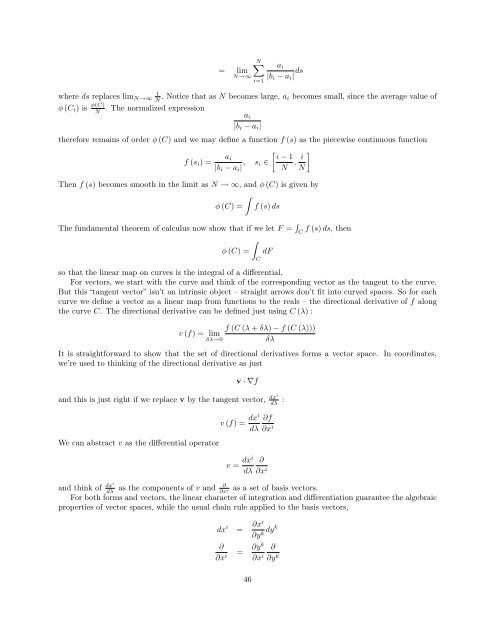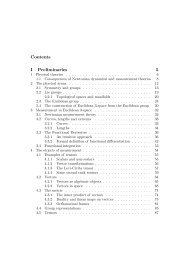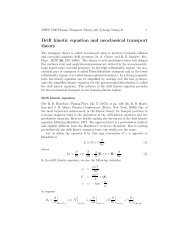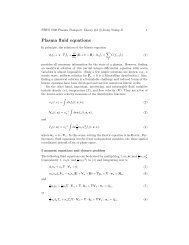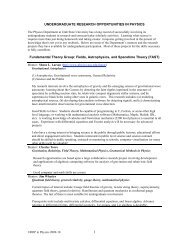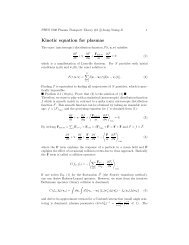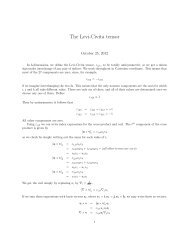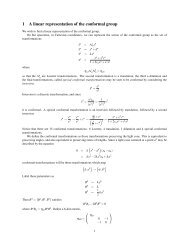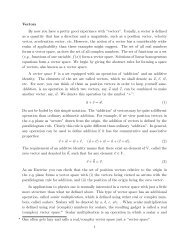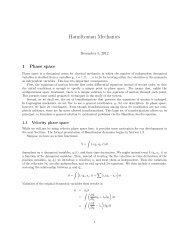Wheeler, Mechanics
Wheeler, Mechanics
Wheeler, Mechanics
You also want an ePaper? Increase the reach of your titles
YUMPU automatically turns print PDFs into web optimized ePapers that Google loves.
= lim<br />
N∑<br />
N→∞<br />
i=1<br />
a i<br />
|b i − a i | ds<br />
where ds replaces lim N→∞<br />
1<br />
N . Notice that as N becomes large, a i becomes small, since the average value of<br />
φ (C i ) is φ(C)<br />
N . The normalized expression a i<br />
|b i − a i |<br />
therefore remains of order φ (C) and we may define a function f (s) as the piecewise continuous function<br />
[ ]<br />
a i<br />
i − 1<br />
f (s i ) =<br />
|b i − a i | , s i ∈<br />
N<br />
, i<br />
N<br />
Then f (s) becomes smooth in the limit as N → ∞, and φ (C) is given by<br />
∫<br />
φ (C) = f (s) ds<br />
The fundamental theorem of calculus now show that if we let F = ∫ f (s) ds, then<br />
C<br />
∫<br />
φ (C) = dF<br />
so that the linear map on curves is the integral of a differential.<br />
For vectors, we start with the curve and think of the corresponding vector as the tangent to the curve.<br />
But this “tangent vector” isn’t an intrinsic object – straight arrows don’t fit into curved spaces. So for each<br />
curve we define a vector as a linear map from functions to the reals – the directional derivative of f along<br />
the curve C. The directional derivative can be defined just using C (λ) :<br />
f (C (λ + δλ) − f (C (λ)))<br />
v (f) = lim<br />
δλ→0<br />
δλ<br />
It is straightforward to show that the set of directional derivatives forms a vector space. In coordinates,<br />
we’re used to thinking of the directional derivative as just<br />
v · ∇f<br />
and this is just right if we replace v by the tangent vector, dxi<br />
dλ :<br />
We can abstract v as the differential operator<br />
C<br />
v (f) = dxi ∂f<br />
dλ ∂x i<br />
v = dxi ∂<br />
dλ ∂x i<br />
and think of dxi<br />
∂<br />
dλ<br />
as the components of v and<br />
∂x<br />
as a set of basis vectors.<br />
i<br />
For both forms and vectors, the linear character of integration and differentiation guarantee the algebraic<br />
properties of vector spaces, while the usual chain rule applied to the basis vectors,<br />
dx i = ∂xi<br />
∂y k dyk<br />
∂<br />
∂x i = ∂yk ∂<br />
∂x i ∂y k<br />
46


